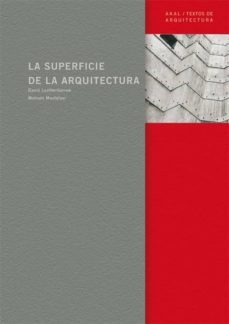Imprescindibles
Ficción
No Ficción
Ciencias y tecnología Biología Ciencias Ciencias naturales Divulgación científica Informática Ingeniería Matemáticas Medicina Salud y dietas Filología Biblioteconomía Estudios filológicos Estudios lingüísticos Estudios literarios Historia y crítica de la Literatura
Humanidades Autoayuda y espiritualidad Ciencias humanas Derecho Economía y Empresa Psicología y Pedagogía Filosofía Sociología Historia Arqueología Biografías Historia de España Historia Universal Historia por países
Infantil
Juvenil
#Jóvenes lectores Narrativa juvenil Clásicos adaptados Libros Wattpad Libros Booktok Libros de influencers Libros de Youtubers Libros Spicy Juveniles Libros LGTBIQ+ Temas sociales Libros ciencia ficción Libros de acción y aventura Cómic y manga juvenil Cómic juvenil Manga Shonen Manga Shojo Autores destacados Jennifer L. Armentrout Eloy Moreno Nerea Llanes Hannah Nicole Maehrer
Libros de fantasía Cozy Fantasy Dark academia Hadas y Fae Romantasy Royal Fantasy Urban Fantasy Vampiros y hombres lobo Otros Misterio y terror Cozy mistery Policiaca Spooky Terror Thriller y suspense Otros
Libros románticos y de amor Dark Romance Clean Romance Cowboy Romance Mafia y amor Romance dramatico Romcom libros Sport Romance Otros Clichés Enemies to Lovers Friends to Lovers Hermanastros Slow Burn Fake Dating Triángulo amoroso
Cómic y manga
Novela gráfica Novela gráfica americana Novela gráfica europea Novela gráfica de otros países Personajes, series y sagas Series y sagas Star Wars Superhéroes Cómics DC Cómics Marvel Cómics otros superhéroes Cómics Valiant
eBooks
Literatura Contemporánea Narrativa fantástica Novela de ciencia ficción Novela de terror Novela histórica Novela negra Novela romántica y erótica Juvenil Más de 13 años Más de 15 años Infantil eBooks infantiles
Humanidades Autoayuda y espiritualidad Ciencias humanas Economía y Empresa Psicología y Pedagogía Filosofía Historia Historia de España Historia Universal Arte Cine Música Historia del arte
Ciencia y tecnología Ciencias naturales Divulgación científica Medicina Salud y dietas Filología Estudios lingüísticos Estudios literarios Historia y crítica de la Literatura Estilo de vida Cocina Guías de viaje Ocio y deportes
David Leatherbarrow
Recibe novedades de DAVID LEATHERBARROW directamente en tu email
Filtros
Del 1 al 2 de 2
DAVID LEATHERBARROW y MOHSEN MOSTAFAVI
MIT PRESS 9780262621946
David Leatherbarrow, Mohsen MostafaviA study of the building surface, architecture�s primary instrument of identity and engagement with its surroundings. contemporary buildings either reflect their systems of production or recollect earlier styles and motifs. This division between production and representation is in some ways an extension of that between modernity and tradition. In this book David Leatherbarrow and Mohsen Mostafavi explore ways that design can take advantage of production methods such that architecture is neither independent of nor dominated by technology. Leatherbarrow and Mostafavi begin with the theoretical and practical isolation of the building surface as the subject of architectural design. The autonomy of the surface, the "free facade," presumes a distinction between the structural and nonstructural elements of the building, between the frame and the cladding. Once the skin of the building became independent of its structure, it could just as well hang like a curtain, or like clothing. The focus of the relationship between structure and skin is the architectural surface. In tracing the handling of this surface, the authors examine both contemporary buildings and those of the recent past. Architects discussed include Albert Kahn, Ludwig Mies van der Rohe, Alison and Peter Smithson, Alejandro de la Sota, Robert Venturi, Jacques Herzog, and Pierre de Meuron.
Ver más
Tapa blanda
AKAL 9788446023128
Visualmente, muchos edificios contemporáneos reflejan sus sistemas de producción o recuerdan estilos y motivos anteriores. Esta división entre producción y representación es de alguna manera una extensión de la que existe entre modernidad y tradición. En esta obra, David Leatherbarrow y Mohsen Mostafavi analizan cómo el diseño puede beneficiarse de los métodos de producción, de modo que la arquitectura ni ignore ni esté dominada por la tecnología. Leatherbarrow y Mostafavi empiezan con el aislamiento teórico y práctico de la superficie del edificio como objeto del diseño arquitectónico. La autonomía de la superficie, la «fachada libre» moderna, presume una distinción entre los elementos estructurales y no estructurales del edificio, entre estructura y cerramiento. Una vez que la piel del edificio se ha hecho independiente de su estructura, puede colgar perfectamente como una cortina o como una tela. Pero las propiedades de la superficie del edificio -ya esté hecha de hormigón, metal, vidrio u otros materiales- no son meramente superficiales, sino que construyen los efectos espaciales a través de los cuales se comunica la arquitectura. A través de sus superficies, el edificio declara su autonomía y también su participación en el entorno. El punto central de la relación entre estructura y piel es la superficie de la arquitectura. Rastreando las soluciones dadas a esta superficie, los autores examinan edificios contemporáneos y del pasado reciente. Entre los arquitectos tratados se incluyen Albert Kahn, Ludwig Mies van der Rohe, Alison y Peter Smithson, Alejandro de la Sota, Robert Venturi y Jacques Herzog y Pierre de Meuron.
Ver más
Tapa blanda
Del 1 al 2 de 2

























